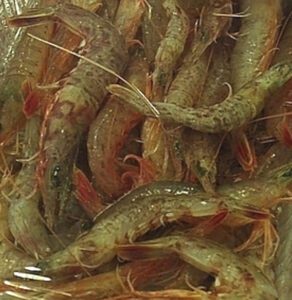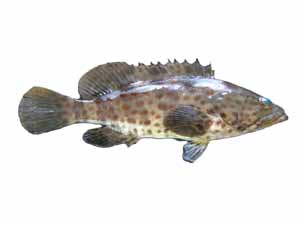Pargo fish is popular in many cultures and cuisines throughout the world. Pargo is actually a name used for several kinds of fish found in the oceans. These fish generally live in warm waters. There are many types of Pargo available, and some most common types are red, mutton, yellowtail and cubera.
Pargo fish are found in warm waters, and they generally like to live in places where there are coral reefs, rocky areas, and underwater structures available. Such environment provides food and shelter for the fish. They are mostly found in the Caribbean Sea, the Gulf of Mexico, the coasts of Central and South America, the Indian Ocean, and the Pacific Ocean.
Pargo fish are popular mainly because of their delicious, and tender meat. They are good source of good quality protein, vitamins and minerals. Many people also enjoy Pargo fishing.
What is Pargo fish?
Pargo is a type of fish found in warm oceans around the world. It is also known as “snapper”. There are many types of Pargo fish available including red (Lutjanus campechanus), yellowtail (Ocyurus chrysurus), mutton (Lutjanus analis), cubera (Lutjanus cyanopterus).

Pargo fish in English
Pargo fish are known by many different names in many countries around the world. It is known as “Pargo” mostly in Spanish-speaking countries. But is called “Snapper” in English. Snapper refers to a group of fish in the family Lutjanidae.
Characteristics
The Pargo fish have several distinctive physical characteristics which make them apart from other fish species. They typically have an oval and streamlined body that is slightly flattened on the sides. Their body coloration can vary widely depending on the species. Red Pargo has bright red or pinkish-red coloration, while the Yellowtail Pargo has a striking yellow body with a greenish-yellow tail.
Pargo fish have several prominent fins. They have a dorsal fin on their back that can be spiny and segmented. Their tail fin is forked. They have smooth, small to medium-sized scales that cover their bodies. Their eyes are large and well-developed. Their teeth are sharp, and pointed.
Diet
Pargo fish are carnivores, and their diet mainly consists of smaller fish, and young fish of other species. They also eat crustaceans, and squid.
Reproduction
Female Pargo fish lay eggs during the spawning season. They come together in the spawning ground. Female fish release thousands of tiny eggs into the water, and the males release sperm to fertilize them. After successful fertilization, the eggs hatch and the larvae emerge. Then the larvae grow and become juvenile, and gradually the juvenile fish become adult fish. And the reproduction process starts again.
Behavior
The Pargo fish are active hunters. They often swim around coral reefs, and rocky areas for finding food. They become more active at night. They don’t usually form large schools like some other popular fish species. Rather, they are often seen alone or in small groups.
Lifespan
Average lifespan of Pargo fish range from 15 to 30 years.

Uses
The Pargo fish are mainly used as food. They are popular mainly for their tasty and tender meat.
Pargo fishing
Pargo fish are popular among the anglers. They are popular mainly for their tasty meat and the challenge of catching them. Pargo fishing can be done from boats, docks or the shore. If you want to fish for Pargo, look around coral reefs, rocky areas, and underwater structures. Early in the morning and the afternoon are considered as the best time for Pargo fishing.
Cooking and recipes
The Pargo fish can be cooked in many different ways. Some most common and popular cooking methods and recipes are:
Grilling: For grilling, you will need 1 whole cleaned and scaled Pargo, olive oil, salt, pepper, lemon slices, and fresh herbs depending upon your choice. Preheat your grill to medium-high heat. Then rub the fish with olive oil and season it with salt and pepper inside and out. Place lemon slices and fresh herbs inside the fish cavity. And then grill the fish for about 5-7 minutes on each side. Serve with additional lemon wedges and your favorite side dishes.
Baking: For baking, take 4 Pargo fish fillets, 2 tablespoons melted butter, 1 teaspoon garlic powder, 1 teaspoon paprika, salt, pepper, and fresh parsley for garnish. Preheat your oven to 375°F. Then place the fish fillets on a baking sheet lined with parchment paper. Brush the fillets with melted butter and sprinkle with garlic powder, paprika, salt, and pepper. Bake for about 15 to 20 minutes, and garnish with fresh parsley before serving.
Frying: Frying is also a very popular recipe for enjoying Pargo fish. For frying, you will need 4 Pargo fillets, 1 cup flour, 1 teaspoon paprika, 1 teaspoon garlic powder, salt, pepper, vegetable oil for frying, and lemon wedges for serving.
Nutrition
The Pargo is a highly nutritious fish and provides several health benefits. Approximate nutritional value per 100 grams serving are:
- Calories: 130-150 kcal
- Protein: 22-25 grams
- Saturated Fat: 0.5-1 gram
- Monounsaturated Fat: 1-2 grams
- Polyunsaturated Fat: 1-2 grams
- Cholesterol: 60-80 mg
- Carbohydrates: 0 grams
- Sodium: 60-70 mg
- Potassium: 400-450 mg
Vitamins and Minerals
- Vitamin A: Approximately 10% of the Daily Value (DV)
- Vitamin D: Approximately 10-15% of the DV
- Vitamin B12: Approximately 30-40% of the DV
- Calcium: Approximately 10% of the DV
- Iron: Approximately 5-10% of the DV
- Magnesium: Approximately 10% of the DV
Health benefits
Consuming Pargo fish provides several health benefits. It is a very good source of high quality protein. It supports your immune function and also beneficial for heart health. It is a good source of omega-3 fatty acids. Omega-3 fatty acids helps to lower blood pressure, reduce inflammation, and decrease the risk of heart disease. It is also a very good source of several vitamins and minerals which is beneficial for different body functions.
Taste
The Pargo fish is very tasty and nutritious. It is known for its mild, delicate flavor and flaky texture. Pargo taste is often described as sweet and slightly nutty. The flesh is tender and moist.

Price
Its not possible to tell the exact price of these fish. Because, exact price of the Pargo fish depends on several factors such as type, location, season, and freshness. On an average, you can expect the price of fresh Pargo fish between $15 to $30 per pound. And the price of fresh Pargo fillets is typically between $20 to $40 per pound. The frozen Pargo are much cheaper ranging between $15 to $25 per pound.
Where to buy Pargo fish?
You can buy Pargo fish from many different sources. Some possible options are your local fish markets, supermarkets, specialty seafood stores, and online seafood retailers.
Frequently asked questions
What is a Pargo fish?
The Pargo is a common and popular type of fish found in warm oceans around the world. It is found in many different types and colors.
What is Pargo fish in English?
Pargo fish is called “snapper” in English.






